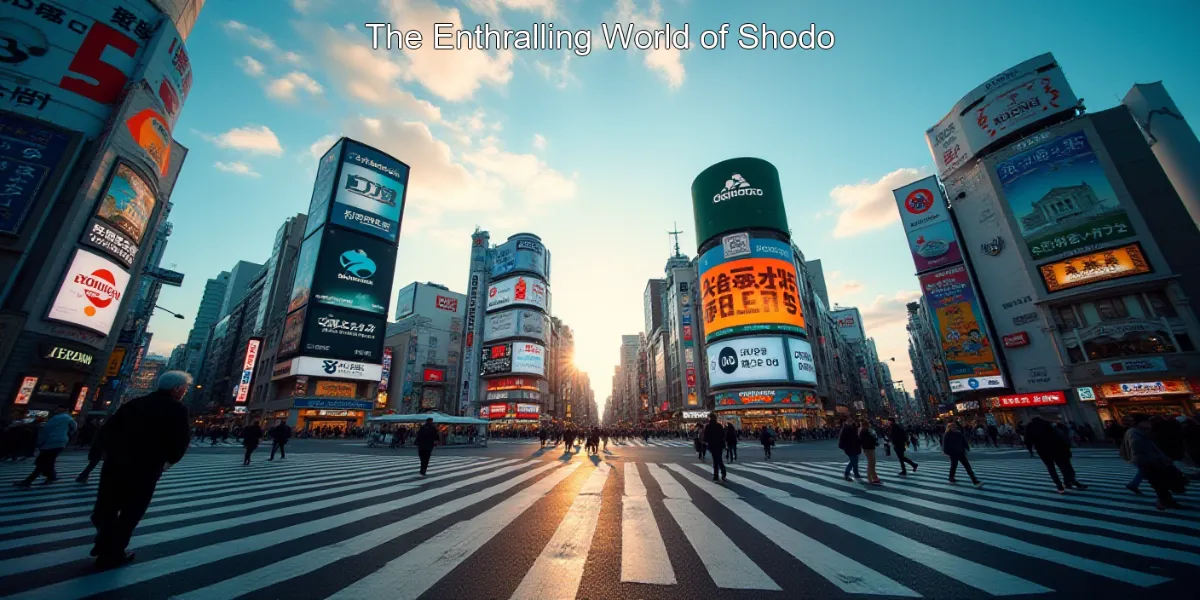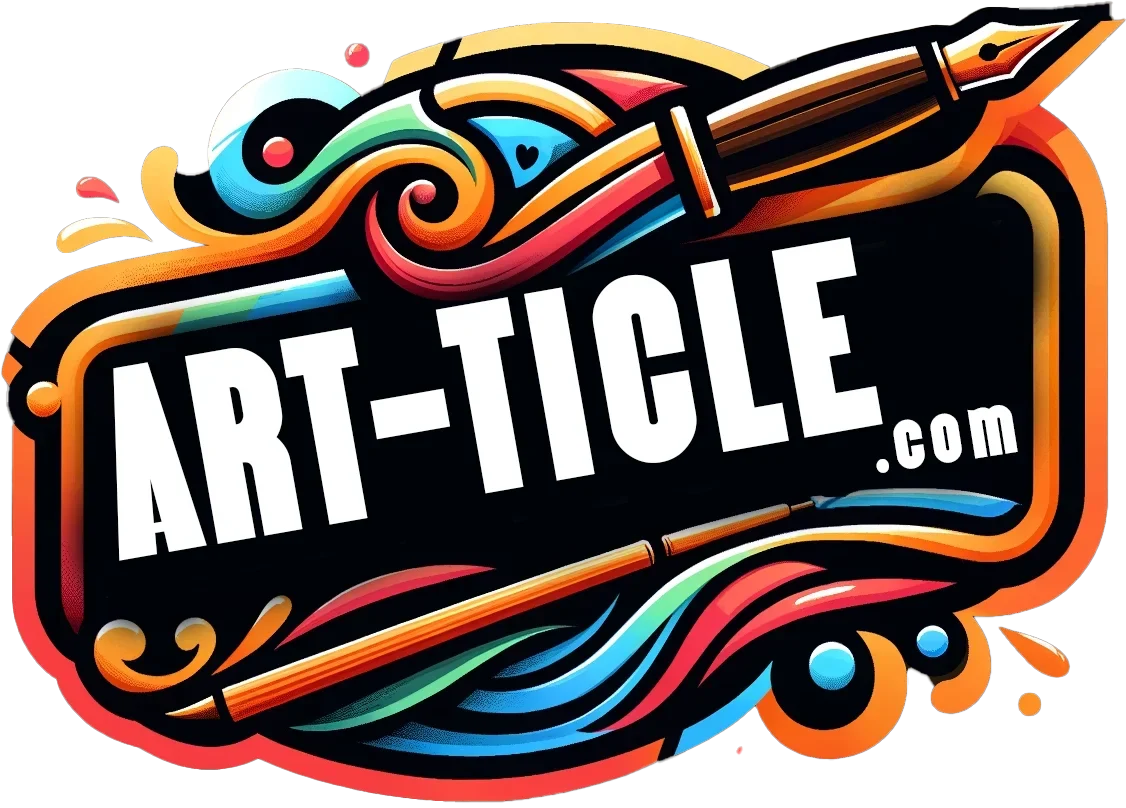The Enthralling World of Shodo

Imagine the delicate whisper of a brush against rice paper, the subtle dance of ink flowing to create elegant characters. This is the world of shodo, Japanese calligraphy, an art form that transcends mere writing, becoming a profound expression of culture, history, and personal spirit. For centuries, shodo has captivated hearts and minds, offering a unique pathway to self-discovery and a deeper understanding of Japanese aesthetics. More than just a skill, it’s a meditative practice, a journey into the heart of Japanese tradition. Learn more about enriching Activities like this one and plan your Travel accordingly.

“Unveiling the Art of Shodo: A Journey of Cultural Expression and Self-Discovery”
Why Explore Shodo?
In today’s fast-paced world, the calming rhythm of shodo offers a much-needed respite. The focused attention required cultivates mindfulness and tranquility, allowing you to disconnect from the digital distractions and reconnect with your inner self. But the benefits extend beyond personal well-being. Understanding shodo provides a window into the rich tapestry of Japanese culture, revealing its values, philosophies, and artistic sensibilities. It’s a journey of self-expression, a chance to unlock your creativity and leave your own unique mark on this ancient art form. Learning shodo is an investment in yourself, a path to personal growth and a deeper appreciation for a timeless tradition. Find helpful Tips for your Destinations.
| Benefit | Description |
|---|---|
| Mindfulness | Develops focus and reduces stress. |
| Cultural Understanding | Provides insight into Japanese history and philosophy. |
| Creative Expression | Unleashes artistic potential and fosters self-expression. |
| Personal Growth | Cultivates patience, discipline, and self-awareness. |
A Journey Through Time and Technique
From the elegant strokes of the brush to the careful selection of ink and paper, shodo is a meticulous art. This article will guide you through the essential techniques, exploring the history and cultural significance of this captivating art form. We’ll delve into the different styles of shodo, examining the unique characteristics of each. We’ll also explore the tools of the trade, from the traditional brushes and inks to the preparation of the rice paper. Prepare to be amazed by the beauty and complexity of this ancient art, and discover how you too can embark on this enriching journey. Check out our comprehensive Guides for further assistance with your Transportation needs.

What You’ll Learn
- The history and evolution of Japanese calligraphy.
- The essential tools and materials used in shodo.
- Fundamental techniques for creating beautiful characters.
- Different styles of shodo and their unique characteristics.
- The cultural significance of shodo in Japanese society.
Unveiling the Secrets of Shodo
This exploration of shodo will not only teach you the technical aspects of the art but also illuminate its deeper cultural meaning. We’ll uncover the philosophical underpinnings of shodo, exploring its connection to Zen Buddhism and the concept of wabi-sabi. You’ll discover how the seemingly simple act of writing can become a profound meditative practice, a pathway to self-discovery and inner peace. Remember to prioritize Safety during your travels. Get ready to embark on a captivating journey into the heart of Japanese culture, where the elegance of the brushstroke reveals the beauty of the human spirit. For any questions, please Contact us.
So, are you ready to unlock the secrets of shodo and experience the transformative power of Japanese calligraphy? Let’s begin!
“
Understanding the History and Significance of Japanese Calligraphy (Shodo)
The Ancient Roots of Shodo
Shodo, the art of Japanese calligraphy, boasts a rich history stretching back centuries. Its origins are intertwined with Chinese calligraphy, but over time, it developed its own unique aesthetic and philosophical underpinnings. Imagine the meticulous strokes of a brush, the careful selection of ink, the quiet contemplation—this is the essence of Shodo. Learning about its history is like embarking on a travel through time, discovering the evolution of this beautiful art form. Early forms were heavily influenced by Chinese styles, but gradually, distinct Japanese characteristics emerged, reflecting the nation’s cultural values and artistic sensibilities. This journey of discovery will enrich your understanding and appreciation of Shodo.
Shodo’s Role in Japanese Culture and Society
For centuries, Shodo has held a prominent position in Japanese culture and society. It wasn’t merely a form of writing; it was a way to cultivate inner peace, express oneself, and connect with tradition. Think of the elegant characters adorning scrolls, screens, and even everyday objects—a testament to the art’s pervasive influence. Mastering Shodo was considered a mark of refinement and education, and its practice extended across social classes. Today, while its practical use as a primary writing system has diminished, its artistic and cultural significance remains strong. It continues to be taught in schools and practiced by many, preserving a vital link to Japan’s past. To truly appreciate Shodo, you need to understand its deep cultural roots and its ongoing relevance in modern Japan. Consider exploring our Guides section for more in-depth information.
| Era | Key Developments |
|---|---|
| Heian Period | Development of elegant cursive scripts; influence of courtly aesthetics. |
| Muromachi Period | Emphasis on Zen Buddhism’s influence; rise of bold, expressive styles. |
| Edo Period | Diversification of styles; increased accessibility to the art form. |
- Shodo is deeply connected to Zen Buddhism.
- It’s a form of self-expression and meditation.
- It’s a valued part of Japanese education.
“Calligraphy is not just about writing; it’s about expressing the soul.” – Anonymous Calligrapher
- Q: What is the difference between Shodo and other forms of calligraphy?
- Q: How did Shodo evolve over time?
- Q: What is the significance of Shodo in modern Japan?
- Q: How does Shodo reflect Japanese aesthetics and philosophy?
- Q: Where can I find more information on the history of Shodo?
- Tip 1: Research the different historical periods of Shodo.
- Tip 2: Explore museums and galleries showcasing Shodo.
- Tip 3: Read books and articles on the history of Japanese art.
Essential Tools and Materials for Shodo
Choosing the Right Brush (Fude)
Selecting the appropriate brush (fude) is crucial for Shodo. The brush is an extension of the artist, its responsiveness directly impacting the final result. Different brushes offer varying levels of flexibility and control, influencing the thickness and texture of the strokes. Imagine the satisfying feel of the bristles against the paper, the subtle nuances of pressure and movement—this tactile experience is integral to the art form. Beginners often start with softer brushes, gradually progressing to firmer ones as their skills develop. The choice of brush is a personal one, influenced by individual preferences and the desired style of calligraphy. For more Tips on choosing the right tools, explore our dedicated resources.
Preparing Ink (Sumi) and Paper (Washi)
The preparation of sumi ink and washi paper is equally important. The quality of these materials significantly influences the overall aesthetic and longevity of the artwork. The process of grinding sumi ink is itself a meditative practice, a moment of quiet contemplation before the creative process begins. The washi paper, known for its unique texture and absorbency, provides the perfect canvas for the ink to flow and dance across its surface. Choosing the right paper is essential for achieving the desired effect. The interaction between ink and paper is a delicate dance, a harmonious blend of materials that contributes to the beauty of Shodo. Check out our Activities section for practical guidance.
| Material | Description | Importance |
|---|---|---|
| Fude | A traditional writing brush made of animal hair. | Provides control and flexibility in creating strokes. |
| Sumi | A type of black ink made from soot and glue. | Creates rich, varied tones and textures. |
| Washi | Traditional Japanese paper made from plant fibers. | Provides a unique texture and absorbency. |
- High-quality brushes are essential for precise strokes.
- Properly prepared sumi ink is key to achieving rich tones.
- Washi paper’s texture and absorbency affect the ink’s flow.
“The quality of your tools directly impacts the quality of your calligraphy.” – Experienced Calligrapher
- Q: What types of brushes are best for beginners?
- Q: How do I prepare sumi ink properly?
- Q: What kind of paper is best for practicing Shodo?
- Q: Where can I purchase high-quality Shodo materials?
- Q: How do I care for my Shodo brushes and paper?
- Step 1: Gather your materials.
- Step 2: Prepare the sumi ink.
- Step 3: Practice basic strokes on washi paper.
Mastering the Basic Strokes and Techniques
Understanding the Fundamental Strokes

Before diving into complex characters, mastering the fundamental strokes is paramount. These basic strokes—horizontal, vertical, diagonal, and curved—form the building blocks of all Shodo characters. Imagine each stroke as a brushstroke dance, a graceful movement that requires precision and control. The pressure, speed, and angle of the brush all contribute to the character’s final form. Practicing these strokes repeatedly helps develop muscle memory and coordination, laying the foundation for more advanced techniques. This foundational practice is essential for achieving fluency and elegance in your calligraphy. For more detailed Destinations for learning, check out our resources.
“Mastering Shodo: From Basic Strokes to Brushstroke Elegance”
Developing Control and Precision
Developing control and precision takes time and dedication. It’s a journey of refinement, a gradual process of honing your skills through consistent practice. Imagine the steady hand, the focused mind, the unwavering attention to detail—these are the hallmarks of a skilled calligrapher. Regular practice helps improve hand-eye coordination and strengthens the muscles involved in writing. As your control improves, you’ll be able to create more nuanced and expressive strokes, adding depth and character to your work. The pursuit of precision is a rewarding one, leading to a deeper appreciation for the art form. For Transportation options to workshops, consult our travel guides.
| Stroke | Description | Example |
|---|---|---|
| Horizontal | A straight line drawn from left to right. | — |
| Vertical | A straight line drawn from top to bottom. | | |
| Diagonal | A line drawn at an angle. | / \ |
- Practice each stroke repeatedly.
- Focus on consistency and control.
- Gradually increase the complexity of your strokes.
“Practice makes perfect, especially in Shodo.” – Aiko Tanaka, Calligraphy Instructor
- Q: How long does it take to master basic strokes?
- Q: What are some common mistakes beginners make?
- Q: How can I improve my control and precision?
- Q: Are there any exercises to help improve my hand-eye coordination?
- Q: How important is posture when practicing Shodo?
- Practice Tip 1: Start with simple strokes and gradually increase complexity.
- Practice Tip 2: Focus on the pressure and speed of your brushstrokes.
- Practice Tip 3: Practice regularly, even for short periods.
Exploring Different Styles and Scripts in Shodo
Kanji: The Chinese Characters
Kanji, the Chinese characters adopted into the Japanese writing system, form a significant part of Shodo. These characters, rich in history and meaning, offer a unique challenge and reward for calligraphers. Imagine the intricate strokes, the subtle variations in style, the profound meanings embedded within each character—this is the beauty of Kanji calligraphy. Mastering Kanji requires a deep understanding of their structure and meaning, adding a layer of intellectual engagement to the artistic process. The complexity of Kanji makes it a rewarding pursuit for those seeking a deeper connection with the art form. For more information on Safety precautions when handling materials, please refer to our safety guidelines.
Kana: The Japanese Syllabaries
Kana, the Japanese syllabaries, offer a different aesthetic experience. Hiragana and Katakana, with their flowing curves and simpler structures, provide a more accessible entry point for beginners. Imagine the elegance of Hiragana’s cursive script, the sharp precision of Katakana’s angular forms—each offers a unique visual appeal. While simpler than Kanji, mastering Kana still requires precision and control, allowing for the exploration of different styles and expressions. The beauty of Kana lies in its fluidity and adaptability, making it a versatile tool for calligraphers. For Contact information regarding workshops and classes, please visit our contact page.
| Script | Characteristics | Examples |
|---|---|---|
| Kanji | Complex characters with multiple strokes; rich in meaning. | 漢字 |
| Hiragana | Cursive script; flowing and elegant. | ひらがな |
| Katakana | Angular script; sharp and precise. | カタカナ |
- Kanji requires a strong understanding of character structure.
- Hiragana is known for its flowing, cursive style.
- Katakana is characterized by its sharp, angular forms.
“Each script has its own unique beauty and personality.” – Kenji Sato, Calligraphy Artist
- Q: What are the differences between Kanji, Hiragana, and Katakana?
- Q: Which script is easiest to learn for beginners?
- Q: Are there any modern variations of these scripts?
- Q: How do the different scripts influence the overall aesthetic of Shodo?
- Q: Can I mix different scripts in one piece of Shodo?
- Style Tip 1: Study the different styles of each script.
- Style Tip 2: Experiment with different brushstrokes and ink techniques.
- Style Tip 3: Find inspiration in traditional and contemporary Shodo.
“
Conclusion: Embracing the Timeless Elegance of Japanese Calligraphy
Recapitulating the Journey
Our exploration of Japanese calligraphy, or shodo, has unveiled a rich tapestry of history, technique, and cultural significance. We’ve journeyed from the ancient origins of the art form, tracing its evolution through centuries of artistic refinement. We’ve delved into the meticulous preparation, the mindful execution, and the profound connection between the calligrapher and the brush. Remember the importance of the tools – the ink, the paper, the brush itself – each a vital element in achieving the desired effect. We’ve also touched upon the spiritual aspects, the meditative practice that transforms the act of writing into a form of self-expression and contemplation.
The Essence of Shodo: More Than Just Strokes
Beyond the technical skills, we’ve discovered that Japanese calligraphy is a profound cultural experience. It’s a window into the soul of Japan, reflecting its values of harmony, balance, and mindfulness. The seemingly simple strokes hold within them a wealth of meaning, reflecting the calligrapher’s personality, emotions, and understanding of the art form. Mastering shodo is not merely about replicating characters; it’s about cultivating inner peace, developing discipline, and expressing oneself through a timeless medium. It’s a journey of self-discovery, a path towards artistic mastery, and a celebration of Japanese cultural heritage.
art-ticle.com: Your Gateway to the Art of Shodo
At art-ticle.com, we understand the allure and the challenge of learning Japanese calligraphy. Our expertise lies in providing comprehensive resources and guidance to aspiring calligraphers of all levels. We offer a curated selection of high-quality materials, ensuring you have the tools you need to embark on your artistic journey. But more than just materials, we provide access to expert instruction, personalized guidance, and a supportive community of fellow enthusiasts. We believe that everyone can experience the joy and tranquility of shodo, regardless of their prior experience.
Unlocking Your Creative Potential with art-ticle.com
Imagine the satisfaction of creating your own beautiful calligraphy, the feeling of the brush gliding across the paper, the meditative focus that allows you to escape the everyday hustle. Picture yourself mastering the elegant strokes, the subtle nuances, the expressive power of this ancient art form. This is not just a hobby; it’s a transformative experience, a journey of self-discovery, and a connection to a rich cultural heritage. With art-ticle.com, you can unlock your creative potential and embark on this enriching adventure.
Beyond the Brushstrokes: A Call to Action

Ready to begin your calligraphy journey? art-ticle.com offers a range of resources to help you get started, from beginner-friendly kits to advanced workshops. We provide personalized guidance tailored to your individual needs and aspirations. Don’t hesitate to Contact us; our team of experts is ready to answer your questions and guide you every step of the way. Let us help you discover the art of Japanese calligraphy and unlock the creative potential within you. Contact us today to explore the possibilities and embark on this enriching artistic adventure. Take the first step towards mastering the elegance and tranquility of shodo. Your artistic journey awaits.
Your Calligraphy Journey Starts Now

Don’t let your passion for Japanese calligraphy remain a dream. Contact art-ticle.com today for a personalized consultation and let us help you transform your passion into a beautiful reality. We are confident that with our expert guidance and high-quality resources, you will find the journey both rewarding and inspiring. Embrace the art of shodo and discover the transformative power of Japanese calligraphy.
“Unlock the Art of Shodo: Personalized Consultation for Your Japanese Calligraphy Journey”
“


